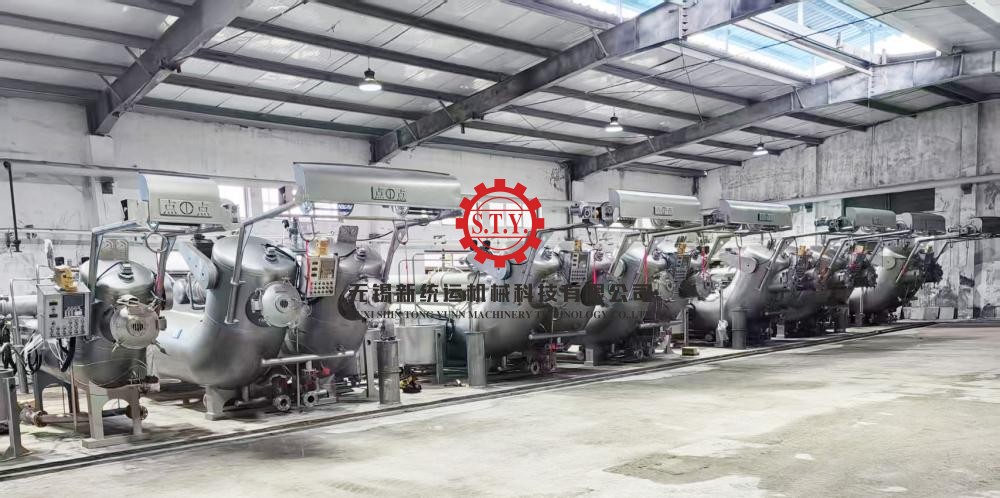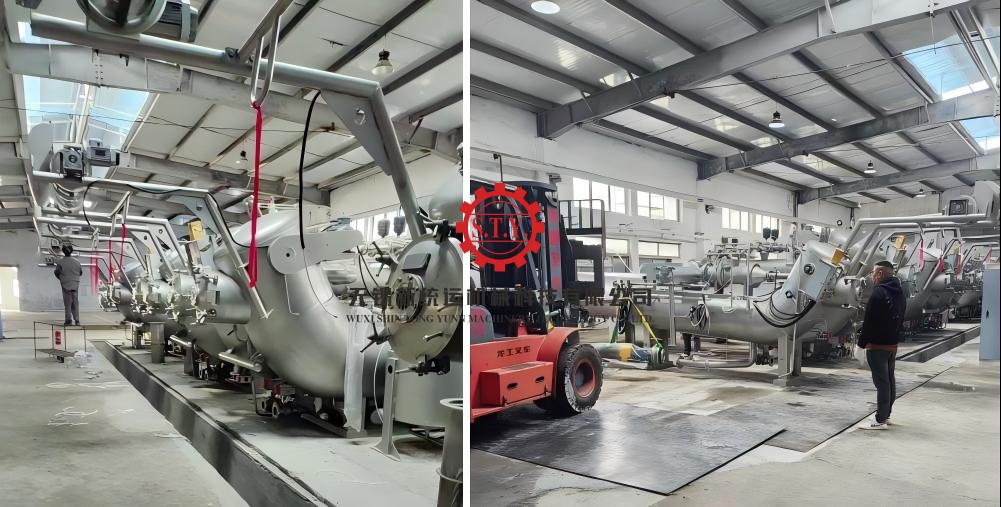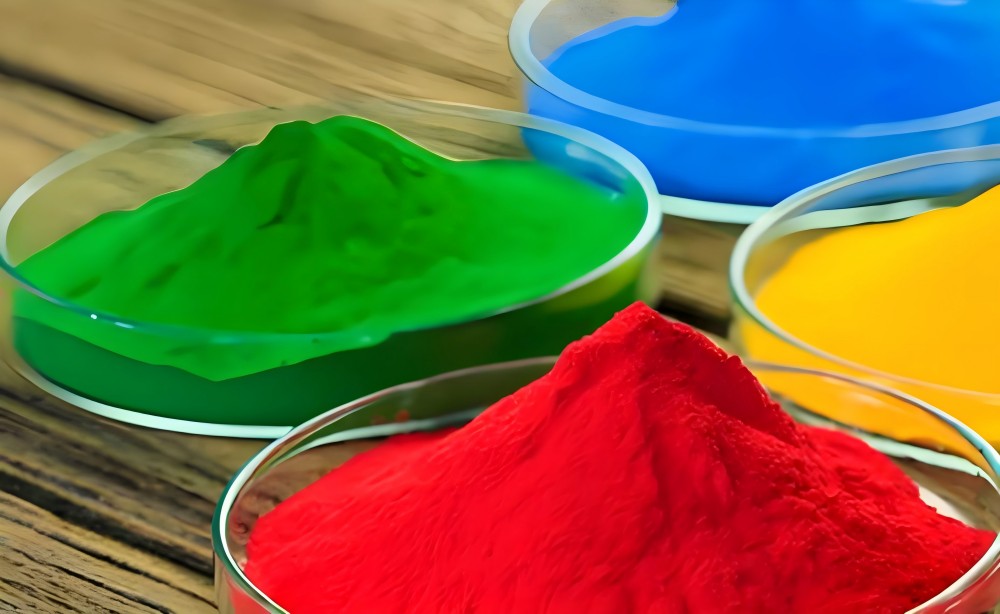What Are You Looking For?
How to overcome the challenges of deep dyeing?
Apr 03, 2025Breaking Through the Barriers in Deep Dyeing: Strategies and Solutions
In textile dyeing industry, dyeing effect of dark fabric directly impacts product value and market competitiveness. However, production often faces challenges:
 Customers demand for deep colors (e.g., jet black, navy) often fall short.
Customers demand for deep colors (e.g., jet black, navy) often fall short.
 Repeated dye additions spike costs and environmental pressure.
Repeated dye additions spike costs and environmental pressure.
 High-temperature, high-pressure dyeing keeps energy consumption high.
High-temperature, high-pressure dyeing keeps energy consumption high.
 Aging equipment struggles with modern deep-dyeing technology requirements.
Aging equipment struggles with modern deep-dyeing technology requirements.
Let's understand some theories and principles of the basic dark effect firstly:
1. Chromophores
The core of dark color effect is regulation of absorption wavelength of the light wave by molecular structure of dye. Dark effect can be achieved by group substitution of absorption wavelength redshift (such as thiomethyl substitution of hydrogen atoms), because the dye molecular structure has both chromophores (wavelength range 380-780mm) and chromophores.
Example: Modifying triazole disperse dyes by replacing hydrogen with "thiomethyl (CH3S-)" group.
Applicable fibers: Nylon/acetate.
Results: 30%+ deeper shade, wash fastness 4–5, light fastness 6.
2. Surface Optics
In K/S value evaluation system, adjusting fabric microstructure (e.g., diffuse reflection) enhances visual depth.
3. Dyeing Kinetics
Traditional methods focus on dye uptake rate, this method is very clear for dark-colored effect and reaction effect is obvious, so it is one of the primary considerations for dyeing work. The dyeing rate is directly related to adsorption/diffusion rate of dyes, swelling degree of fibers and the molecular structure of dyes affect the penetration depth.

Speaking of this, choice of suitable dyeing machine model is also the hardware basis of dark dyeing. Choosing the right dyeing machine is one of the steps to enhance dark color effect. Different fiber and dye series need to be matched with specific equipment:
1) High-Temperature Overflow Dyeing Machine
TY-JL636 HTHP Overflow Dyeing Machine is suitable for dyeing synthetic fibers such as polyester and nylon with disperse dyes. The design working maximum temperature is 140°C, facilitating fiber swelling and dye penetration. Equipped with precise temperature control system, reduce hydrolysis rate of dyes (temperature deviation controlled within ±0.5–1°C). Combined with its newly designed structure, this model dyeing equipment achieves ultra-low bath ratio 1:6, reducing dye consumption by 30%.
2) Airflow Dyeing Machine
The airflow dyeing machine is ideal for dark dyeing processes of sensitive fibers (such as microfiber polyester). Driven by high-speed airflow to circulate fabric, it effectively minimizes color variation caused by mechanical friction. Compared to traditional overflow dyeing machines, this technology significantly reduces energy consumption of water and steam.
3) Jet Dyeing Machine
Jet dyeing machine is equipped with high-pressure jet system, which enhances penetration ability of dye liquor. This makes it particularly suitable for achieving uniform dyeing on high-density fabric (such as curtain fabric) while improving the K/S value significantly.

In addition to understanding principles and how to select suitable dyeing machines for achieving excellent deep color effect, there are other key approaches.
A. Enhanced pre-treatment measures
Alkali Deweighting:
The alkali deweighting rate of polyester fabrics should be precisely controlled within 10%-20%. This process significantly reduces fiber surface roughness (Ra value decreases by 30-50%). Key parameters requiring strict control include:
Two industrial process routes currently exist: batch-type dyeing machines and continuous alkali deweighting equipment. Laboratory comparative tests demonstrate that continuous equipment reduces the deweighting CV value from 12.3% to 5.8%. Prioritizing continuous systems is advised to ensure uniformity and avoid localized over-hydrolysis-induced strength loss (warp breaking strength reduction should be controlled below 15%).
Plasma Treatment:
A plasma treatment system is recommended for functional high-end fabrics (atmospheric pressure plasma equipment is advised). This technology proves particularly effective for pre-treating cellulose-blended fabrics like linen and ramie. After 300-500W radio frequency power treatment:
Equipment selection must balance processing efficiency (recommended line speed ≥20m/min) with ROI period (CAPEX payback should be ≤36 months). Modular designs are recommended to accommodate diverse production requirements.
B. Chemical Modification of Fibers
Cationic Modification: Applicable to cellulose fibers (regenerated textile materials made from natural plant cellulose). By directly adding quaternary ammonium reagent (e.g., CHPTAC) into fabric dyeing machine, positive charge groups are introduced to enhance binding with cationic dyes (This method enables simultaneous cellulose modification and dyeing in a one-bath process, effectively shortening production steps and reducing energy consumption). K/S value can increase by 100%-200% after modification. However, attention should be paid to the uniformity of modification and its impact on fiber strength.
Bioenzyme Treatment: Cellulase treatment is applied to natural fibers like cotton/linen. The enzyme decomposes amorphous regions of cellulose fibers, disrupting the crystalline structure on the fiber surface to create micro-pores and cracks. This process:
This modification mechanism optimizes both the physical structure and chemical properties of fibers for enhanced dyeability.
C. Rare Earth and Deepening Agents
Rare Earth Application: Dyeing machine with automatic dosing system to precisely control addition of rare earth chloride (LaCl₃), improving dye uptake rate by 1.52 grade. However, wastewater treatment requires use closed-loop recycling dyeing system.
Selection of Deepening Agents: Resins with good compatibility with dyes (e.g., modified silicones) can be prioritized to avoid color shifts caused by post-finishing. For example, deepening agent containing nanoparticles can be used for polyester deep black dyeing to enhance blackness through diffuse reflection.

The achievement of dark dyeing effects constitutes a systematic engineering endeavor that requires synergistic coordination among dyeing & finishing equipment, dyeing technology parameters and dye chemical systems. During process design phase, manufacturing enterprises must scientifically select compatible dyeing machine models and auxiliary systems based on the differential characteristics of textile fibers. Notably, with iterative upgrades in intelligent dyeing control technology, dyeing processes are progressively realizing technological breakthrough toward high-precision controllable process and low-energy consumption production mode. This evolution signifies that dyeing-finishing industry is poised to usher in new era of intelligent process innovation.